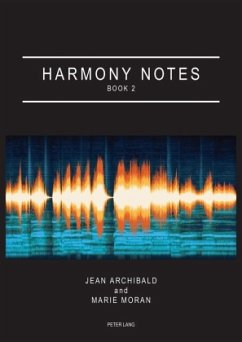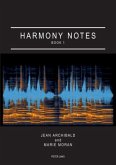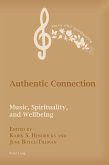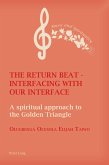Harmony Notes: Book 2, is a natural follow on from Harmony Notes: Book 1. The vocabulary is expanded to encompass dissonant decoration, modulation, secondary 7ths and an exploration of Classical chromatic harmony. Clear uncomplicated explanations of each topic accompanied by aural examples are central to the conception and design. At every stage the aim is to foster a musical understanding and encourage a holistic approach - emphasising the necessary link between sound and symbol.
The material is explored throughout seventeen chapters and includes exercises to assist with the learning, absorption and application of the topic at hand.
'Lightbulb' moments flag essential grammatical points, while 'checklist' and 'summary' boxes provide a useful revision tool. All audio examples are indicated by interactive 'headphone' logos.
Although Harmony Notes deals primarily with vocal writing, the scope of the book expands to include simple analysis exploring the application of the harmony in a variety of other textures.
A creative and musical approach is always encouraged associating the sound with the symbol at every stage of the learning.
Resources to supplement Harmony Notes: Book 2
The musical examples in the main body of the book are interactive, intended to be listened to while studying the various topics. In addition, all exercises are available as separate downloads for ease of working.
Chapters:Chapter 1Chapter 2Chapter 3Chapter 4 (Analysis)Chapter 5Chapter 6Chapter 7Chapter 8Chapter 9Chapter 10 (Analysis)Chapter 11Chapter 12Chapter 13Chapter 14Chapter 15Chapter 16Chapter 17 (Analysis)
Audios:Audio 1.1Audio 1.2Audio 1.3
The material is explored throughout seventeen chapters and includes exercises to assist with the learning, absorption and application of the topic at hand.
'Lightbulb' moments flag essential grammatical points, while 'checklist' and 'summary' boxes provide a useful revision tool. All audio examples are indicated by interactive 'headphone' logos.
Although Harmony Notes deals primarily with vocal writing, the scope of the book expands to include simple analysis exploring the application of the harmony in a variety of other textures.
A creative and musical approach is always encouraged associating the sound with the symbol at every stage of the learning.
Resources to supplement Harmony Notes: Book 2
The musical examples in the main body of the book are interactive, intended to be listened to while studying the various topics. In addition, all exercises are available as separate downloads for ease of working.
Chapters:Chapter 1Chapter 2Chapter 3Chapter 4 (Analysis)Chapter 5Chapter 6Chapter 7Chapter 8Chapter 9Chapter 10 (Analysis)Chapter 11Chapter 12Chapter 13Chapter 14Chapter 15Chapter 16Chapter 17 (Analysis)
Audios:Audio 1.1Audio 1.2Audio 1.3








